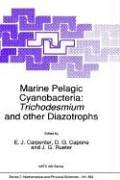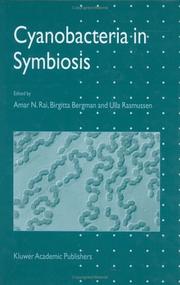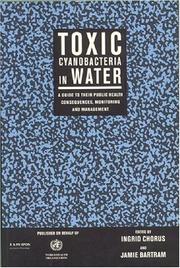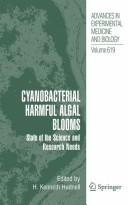| Listing 1 - 10 of 15 | << page >> |
Sort by
|
Book
Year: 2015 Publisher: Reston, Virginia : U.S. Department of the Interior, U.S. Geological Survey,
Abstract | Keywords | Export | Availability | Bookmark
 Loading...
Loading...Choose an application
- Reference Manager
- EndNote
- RefWorks (Direct export to RefWorks)
Cyanobacterial blooms --- Subsistence fishing --- Toxicology --- Safety measures.
Book
Year: 2010 Publisher: Reston, Va. : U.S. Department of the Interior, U.S. Geological Survey,
Abstract | Keywords | Export | Availability | Bookmark
 Loading...
Loading...Choose an application
- Reference Manager
- EndNote
- RefWorks (Direct export to RefWorks)
Aphanizomenon --- Suspended sediments --- Cyanobacterial blooms --- Vertical distribution --- Measurement. --- Oregon
Book
Year: 2015 Publisher: Washington : U.S. Government Publishing Office,
Abstract | Keywords | Export | Availability | Bookmark
 Loading...
Loading...Choose an application
- Reference Manager
- EndNote
- RefWorks (Direct export to RefWorks)
Cyanobacterial blooms --- Algal blooms --- Drinking water --- Environmental aspects --- Contamination

ISBN: 0792316142 9048141265 9401579776 9780792316145 Year: 1992 Volume: 362 Publisher: Dordrecht ; Norwell, MA : Kluwer,
Abstract | Keywords | Export | Availability | Bookmark
 Loading...
Loading...Choose an application
- Reference Manager
- EndNote
- RefWorks (Direct export to RefWorks)
Cyanobacteria --- Cyanobacterial blooms --- Trichodesmium --- Congresses --- Congresses. --- Cyanobacteria - Congresses. --- Trichodesmium - Congresses. --- Cyanobacterial blooms - Congresses. --- Blooms --- Meetings --- Nitrogen fixation
Book
Year: 2017 Publisher: Reston, Virginia : U.S. Department of the Interior, U.S. Geological Survey,
Abstract | Keywords | Export | Availability | Bookmark
 Loading...
Loading...Choose an application
- Reference Manager
- EndNote
- RefWorks (Direct export to RefWorks)
Cyanobacterial blooms --- Algal blooms --- Cyanobacterial toxins --- Drinking water --- Toxicology --- Monitoring --- Contamination --- Prevention.
Book
Year: 2018 Publisher: Reston, Virginia : U.S. Department of the Interior, U.S. Geological Survey,
Abstract | Keywords | Export | Availability | Bookmark
 Loading...
Loading...Choose an application
- Reference Manager
- EndNote
- RefWorks (Direct export to RefWorks)
Cyanobacterial blooms --- Algal blooms --- Biological monitoring --- Willow Creek Reservoir (Morrow County, Or.) --- Oregon --- Environmental conditions.
Book
Year: 1984 Publisher: Augusta, Maine : U.S. Geological Survey,
Abstract | Keywords | Export | Availability | Bookmark
 Loading...
Loading...Choose an application
- Reference Manager
- EndNote
- RefWorks (Direct export to RefWorks)
Algae --- Algal blooms --- Cyanobacterial blooms --- Phosphorus --- Plankton blooms --- Control --- Environmental aspects --- Maine.

ISBN: 1402007779 0306480050 9781402007774 Year: 2002 Publisher: Dordrecht : Springer Netherlands,
Abstract | Keywords | Export | Availability | Bookmark
 Loading...
Loading...Choose an application
- Reference Manager
- EndNote
- RefWorks (Direct export to RefWorks)
Cyanobacterial symbioses are no longer regarded as mere oddities but as important components of the biosphere, occurring both in terrestrial and aquatic habitats worldwide. It is becoming apparent that they can enter into symbiosis with a wider variety of organisms than hitherto known, and there are many more still to be discovered, particularly in marine environments. The chapters cover cyanobacterial symbioses with plants (algae, bryophytes, Azolla, cycads, Gunnera), cyanobacterial symbioses in marine environments, lichens, Nostoc-Geosiphon (a fungus closely related to arbuscular mycorrhiza fungi) symbiosis, and artificial associations of cyanobacteria with economically important plants. In addition, cyanobiont diversity, sensing-signalling, and evolutionary aspects of the symbiosis are dealt with. Renowned experts actively involved in research on cyanobacterial symbioses deal with ecological, physiological, biochemical, molecular, and applied aspects of all known cyanobacterial symbioses. This volume on cyanobacteria in symbiosis complements the two earlier volumes on cyanobacteria published by Kluwer (Molecular Biology of Cyanobacteria, edited by D.A. Bryant and Ecology of Cyanobacteria, edited by B.A. Whitton and M. Potts). Together, the three volumes provide the most comprehensive treatment of cyanobacterial literature as a whole. The book will serve as a valuable reference work and text for teaching and research in the field of plant-microbe interactions and nitrogen fixation.
Cyanobacterial blooms. --- Cyanobacteria --- Symbiosis. --- Symbiosis --- Ecology. --- Ecology --- Cyanobacterial blooms --- Biology --- Health & Biological Sciences --- Microbiology & Immunology --- Consortism --- Symbiogenesis --- Bacteria, Blue-green --- Blue-green algae --- Blue-green bacteria --- Blue-greens (Microorganisms) --- Cryptophyceae --- Cyanochloronta --- Cyanophyceae --- Cyanophycota --- Cyanophyta --- Myxophyceae --- Myxophyta --- Phycochromophyceae --- Schizophyceae --- Prokaryotes --- Blooms, Cyanobacterial --- Cyanobacteria blooms --- Water bloom --- Water blooms --- Plankton blooms --- Cyanobacteria - Ecology. --- Cyanobacteria - Ecology

ISBN: 0419239308 9780419239307 Year: 2005 Publisher: London Taylor and Francis
Abstract | Keywords | Export | Availability | Bookmark
 Loading...
Loading...Choose an application
- Reference Manager
- EndNote
- RefWorks (Direct export to RefWorks)
574.5 --- 574.5 Hydrobiology. Aquatic biocoenoses and ecosystems. Food chains --- Hydrobiology. Aquatic biocoenoses and ecosystems. Food chains --- Cyanobacteria --- Cyanobacterial blooms --- Cyanobacterial toxins --- Drinking water --- Sanitary microbiology --- Blue-green algal toxins --- Cyanobacteria toxins --- Cyanotoxins --- Bacterial toxins --- Blooms, Cyanobacterial --- Cyanobacteria blooms --- Water bloom --- Water blooms --- Plankton blooms --- Bacteria, Blue-green --- Blue-green algae --- Blue-green bacteria --- Blue-greens (Microorganisms) --- Cryptophyceae --- Cyanochloronta --- Cyanophyceae --- Cyanophycota --- Cyanophyta --- Myxophyceae --- Myxophyta --- Phycochromophyceae --- Schizophyceae --- Prokaryotes --- Microbiology --- Cyanobacteria. --- Cyanobacterial blooms. --- Cyanobacterial toxins. --- Microbiology. --- Drinking water - Microbiology

ISBN: 1281242306 9786611242305 0387758658 038775864X Year: 2008 Publisher: New York : Springer,
Abstract | Keywords | Export | Availability | Bookmark
 Loading...
Loading...Choose an application
- Reference Manager
- EndNote
- RefWorks (Direct export to RefWorks)
Cyanobacteria are single-celled organisms that live in fresh, brackish, and marine water. They use sunlight to make their own food. In warm, nutrient-rich environments, microscopic cyanobacteria can grow quickly, creating blooms that spread across the water’s surface and may become visible. Because of the color, texture, and location of these blooms, the common name for cyanobacteria is blue-green algae. However, cyanobacteria are related more closely to bacteria than to algae. Cyanobacteria are found worldwide, from Brazil to China, Australia to the United States. In warmer climates, these organisms can grow year-round. Scientists have called cyanobacteria the origin of plants, and have credited cyanobacteria with providing nitrogen fertilizer for rice and beans. But blooms of cyanobacteria are not always helpful. When these blooms become harmful to the environment, animals, and humans, scientists call them cyanobacterial harmful algal blooms (CyanoHABs). Freshwater CyanoHABs can use up the oxygen and block the sunlight that other organisms need to live. They also can produce powerful toxins that affect the brain and liver of animals and humans. Because of concerns about CyanoHABs, which can grow in drinking water and recreational water, the U.S. Environmental Protection Agency (EPA) has added cyanobacteria to its Drinking Water Contaminant Candidate List. This list identifies organisms and toxins that EPA considers to be priorities for investigation. Reports of poisonings associated with CyanoHABs date back to the late 1800's. Anecdotal evidence and data from laboratory animal research suggest that cyanobacterial toxins can cause a range of adverse human health effects, yet few studies have explored the links between CyanoHABs and human health. Humans can be exposed to cyanobacterial toxins by drinking water that contains the toxins, swimming in water that contains high concentrations of cyanobacterial cells, or breathing air that contains cyanobacterial cells or toxins (while watering a lawn with contaminated water, for example). Health effects associated with exposure to high concentrations of cyanobacterial toxins include: stomach and intestinal illness; trouble breathing; allergic responses; skin irritation; liver damage; and neurotoxic reactions, such as tingling fingers and toes. Scientists are exploring the human health effects associated with long-term exposure to low levels of cyanobacterial toxins. Some studies have suggested that such exposure could be associated with chronic illnesses, such as liver cancer and digestive-system cancer. This monograph contains the proceedings of the International Symposium on Cyanobacterial Harmful Algal Blooms held in Research Triangle Park, NC, September 6-10, 2005. The symposium was held to help meet the mandates of the Harmful Algal Bloom and Hypoxia Research and Control Act, as reauthorized and expanded in December 2004. The monograph will be presented to Congress by an interagency task force. The monograph includes: 1) A synopsis which proposes a National Research Plan for Cyanobacteria and their Toxins; 2) Six workgroup reports that identify and prioritize research needs; 3) Twenty-five invited speaker papers that describe the state of the science; 4) Forty poster abstracts that describe novel research.
Algal blooms --- Cyanobacterial blooms --- Cyanobacterial toxins --- Health aspects. --- Prevention. --- Environmental aspects. --- Algae blooms --- Blooms, Algal --- Microalgal blooms --- Phytoplankton algal blooms --- Water bloom --- Water blooms --- Algal populations --- Microalgae --- Plankton blooms --- Blue-green algal toxins --- Cyanobacteria toxins --- Cyanotoxins --- Bacterial toxins --- Blooms, Cyanobacterial --- Cyanobacteria blooms --- Cyanobacteria --- Neurosciences. --- Neural sciences --- Neurological sciences --- Neuroscience --- Medical sciences --- Nervous system
| Listing 1 - 10 of 15 | << page >> |
Sort by
|

 Search
Search Feedback
Feedback About UniCat
About UniCat  Help
Help News
News